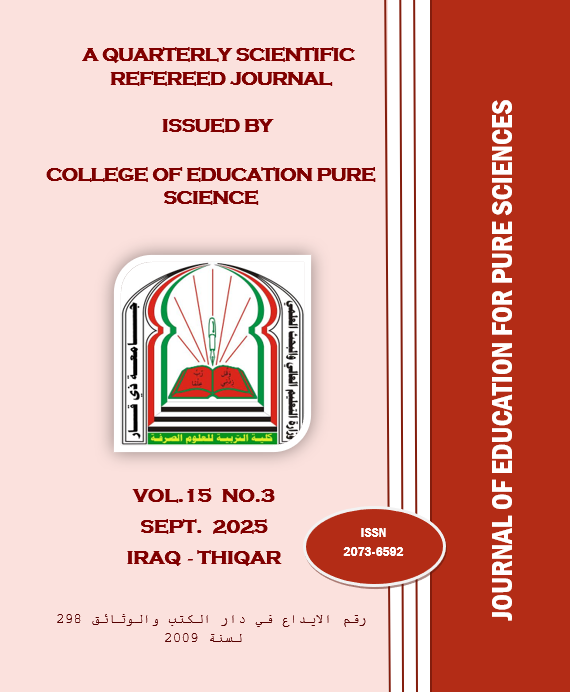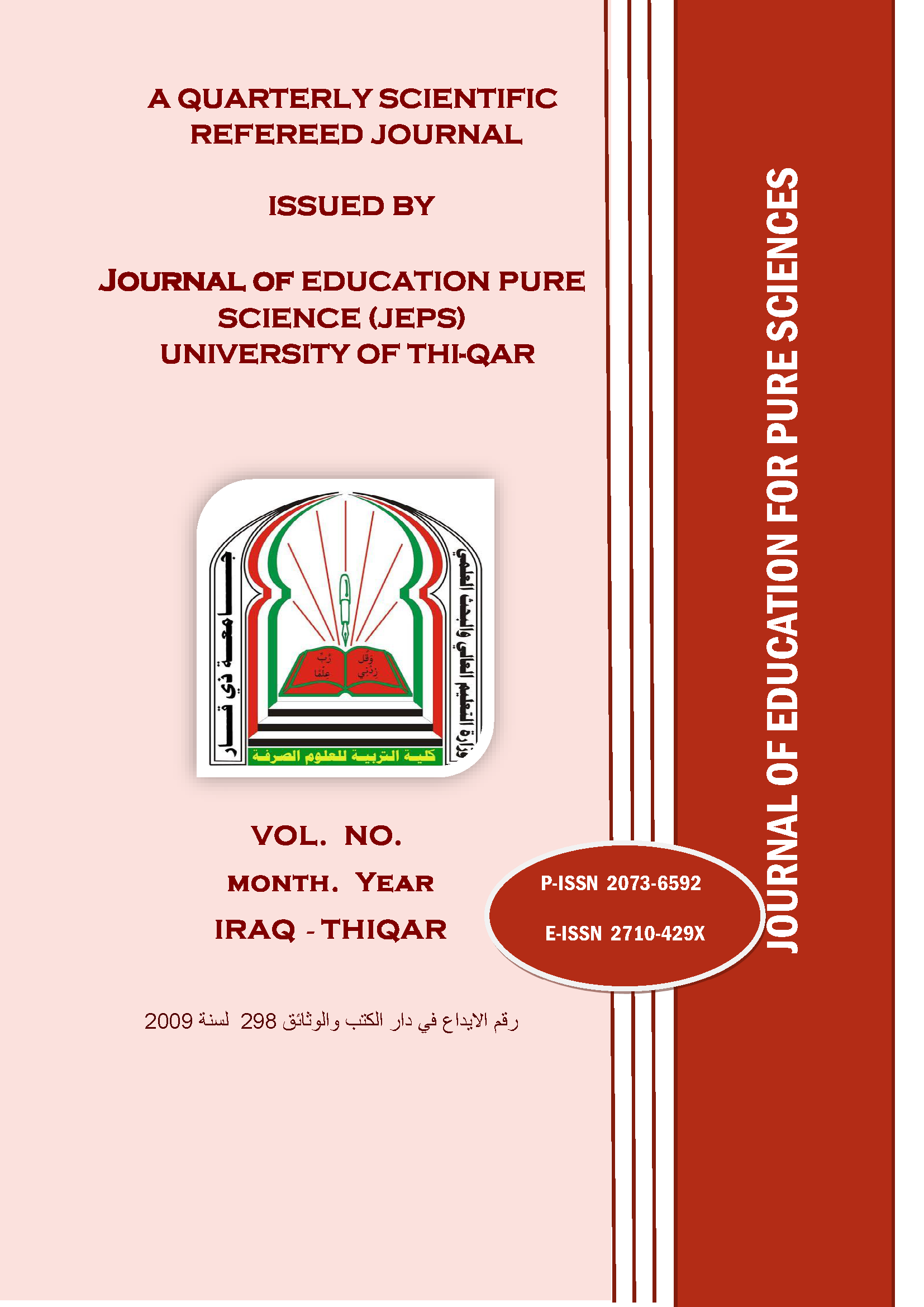The effect of polycystic ovary syndrome on the hormones of the adrenal gland
DOI:
https://doi.org/10.32792/jeps.v15i3.702Keywords:
Indocrine gland, Aldosterone, Cortisol, Epinephrine, Polycystic ovary syndrome (PCOS).Abstract
Polycystic ovary syndrome (PCOS), which is characterized by an imbalance in the hormonal balance that may lead to other health problems if not followed up or treated appropriately, there is no evidence to show that PCOS has a direct effect on the adrenal gland and on adrenal hormones such as Epinephrine, Aldosterone and Cortisol in female laboratory rats, and the aim of the study recognizes the effect of PCOS on the adrenal gland physiological terms. 16 female rats were evenly divided into two groups (8 mice in each group). The first group was the control group, which is a nature rat that was not given any drug, while the second group was given orally 0.2 mg per kg of letrozole to induce PCOS. At the end of the experiment, blood samples were used to evaluate hormones such as Epinephrine, Aldosterone, Cortisol, Estrogen and Testosterone. The result of the study revealed a significant increase in the concentration of the hormone Epinephrine, Estrogen and Testosterone, with a significant decrease in the concentration of Aldosterone and Cortisol. The study concluded that adrenal hormones are affected by PCOS, which leads to pathological changes in the adrenal gland, indicating a decrease in the adrenal gland activity.
References
• Azziz, R., et al. (2004). The Androgen Excess and PCOS Society criteria for the polycystic ovary syndrome: the complete task force report. Fertil Steril, 91(2), 456–488. https://www.fertstert.org/article/S0015-0282(08)01392-7/pdf
• Bornstein, S. R., Engeland, W. C., Ehrhart-Bornstein, M., & Herman, J. P. (2004). Dissociation of ACTH and glucocorticoids. Trends in Endocrinology & Metabolism, 15(5), 175–180. https://doi.org/10.1016/j.tem.2004.03.007
• Carter, J. R., Panerai, R. B., & Robinson, T. G. (2012). Sympathetic neural responses to stress in women with polycystic ovary syndrome. Clinical Autonomic Research, 22(1), 39–45. https://doi.org/10.1007/s10286-011-0133-0
• Duleba, A. J., & Dokras, A. (2012). Is PCOS an inflammatory process? Fertility and Sterility, 97(1), 7–12. https://doi.org/10.1016/j.fertnstert.2011.11.023
• Elenkov, I. J., Wilder, R. L., Chrousos, G. P., & Vizi, E. S. (2000). Stress, catecholamines, and immune response. Neuroimmunomodulation, 7(3), 161–179. https://doi.org/10.1159/000026484
• Elsenbruch, S., Hahn, S., Kowalsky, D., Henschel, F., Möhler, H., Janssen, O. E., & Mann, K. (2003). Altered responses of the hypothalamus–pituitary–adrenal axis and the sympathetic nervous system to stress in women with polycystic ovary syndrome. Journal of Clinical Endocrinology & Metabolism, 88(12), 6296–6302. https://doi.org/10.1210/jc.2003-030346
• González, F., Rote, N. S., Minium, J., & Kirwan, J. P. (2012). Inflammation in polycystic ovary syndrome: underpinning of insulin resistance and ovarian dysfunction. Steroids, 77(4), 300–305. https://doi.org/10.1016/j.steroids.2011.12.003
• Kafali, H., Iriadam, M., Ozardali, I., & Demir, N. (2004). Letrozole-induced polycystic ovaries in the rat: a new model for cystic ovarian disease. Archives of Medical Research, 35(2), 103–108. https://doi.org/10.1016/j.arcmed.2003.11.005
• Kauffman, A. S., Thackray, V. G., Ryan, G. E., Tolson, K. P., Glidewell-Kenney, C. A., Semaan, S. J., ... & Mellon, P. L. (2015). Polycystic ovary syndrome: a neuroendocrine perspective. Frontiers in Neuroendocrinology, 39, 1–15. https://doi.org/10.1016/j.yfrne.2015.08.002
• Lara, H. E., Ferruz, J. L., Luza, S., Bustamante, D. A., Borges, Y., & Ojeda, S. R. (2000). Evidence for a local effect of noradrenaline on ovarian steroidogenesis in polycystic ovary syndrome. Endocrine, 12(3), 267–274. https://doi.org/10.1385/ENDO:12:3:267
• Nieman, L. K. (2015). Cushing’s syndrome: Update on signs, symptoms and biochemical screening. European Journal of Endocrinology, 173(4), M33–M38. https://doi.org/10.1530/EJE-15-0461
• Rashid, N., Moulana, M., Abid, S., & Hussain, T. (2013). Angiotensin II type 1 receptor expression is altered in PCOS rat model. Journal of Endocrinological Investigation, 36(10), 796–802. https://doi.org/10.3275/8992
• Stener-Victorin, E., Padmanabhan, V., Walters, K. A., & Campbell, R. E. (2010). Animal models for the study of PCOS: a critical assessment. Molecular and Cellular Endocrinology, 373(1–2), 76–86. https://doi.org/10.1016/j.mce.2012.10.005
• Wang, N., Zhang, Y., Wang, Y., Ma, X., & Zhang, J. (2019). Hormonal regulation of steroidogenesis in polycystic ovary syndrome. Reproductive Biology and Endocrinology, 17(1), 1-10. https://doi.org/10.1186/s12958-019-0505-2
• Wang, Y., Ma, X., Zhou, L., Liu, Y., Ma, Z., & Wang, Y. (2016). Aromatase expression in adipose tissues and its role in hyperestrogenism in PCOS rat model. Endocrine Journal, 63(2), 123–130. https://doi.org/10.1507/endocrj.EJ15-0423
• Zhao, X., Xu, F., Qi, L., Zhang, D., & Wu, X. (2018). Endocrine and metabolic characteristics of a PCOS rat model induced by DHEA. Journal of Ovarian Research, 11(1), 45. https://doi.org/10.1186/s13048-018-0415-4
Downloads
Published
Issue
Section
License
Copyright (c) 2025 Journal of Education for Pure Science

This work is licensed under a Creative Commons Attribution-NonCommercial-NoDerivatives 4.0 International License.
The Authors understand that, the copyright of the articles shall be assigned to Journal of education for Pure Science (JEPS), University of Thi-Qar as publisher of the journal.
Copyright encompasses exclusive rights to reproduce and deliver the article in all form and media, including reprints, photographs, microfilms and any other similar reproductions, as well as translations. The reproduction of any part of this journal, its storage in databases and its transmission by any form or media, such as electronic, electrostatic and mechanical copies, photocopies, recordings, magnetic media, etc. , will be allowed only with a written permission from Journal of education for Pure Science (JEPS), University of Thi-Qar.
Journal of education for Pure Science (JEPS), University of Thi-Qar, the Editors and the Advisory International Editorial Board make every effort to ensure that no wrong or misleading data, opinions or statements be published in the journal. In any way, the contents of the articles and advertisements published in the Journal of education for Pure Science (JEPS), University of Thi-Qar are sole and exclusive responsibility of their respective authors and advertisers.





